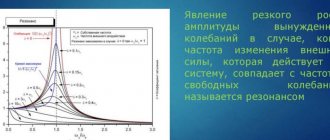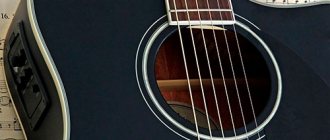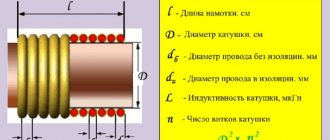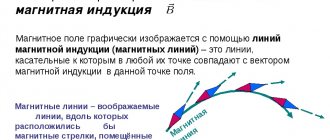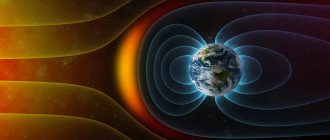What is resonance?
Have you ever wondered how people create beautiful music using ordinary glasses? As glass becomes more exposed to sound waves, it may even break. Light waves also interact in special ways with objects around them. The behavior of sound and light waves explains why people hear the sounds of musical instruments and distinguish colors. Changes in wave amplitude are caused by an important principle called resonance. Examples of influences on the transmission of sound and light are vibrations.
Sound waves originate from mechanical vibrations in solids, liquids and gases. Light waves come from the vibration of charged particles. Objects, charged particles, and mechanical systems usually have a specific frequency at which they tend to vibrate. This is called their resonant frequency or their natural frequency. Some objects have two or more resonant frequencies. An example of resonance: when you are driving on a bumpy road and your car starts jumping up and down, this is an example of your car oscillating at its resonant frequency, or rather the resonant frequency of the shock absorbers. You may notice that when you are riding a bus, the rebound frequency is a little slower. This is because tire shock absorbers have a lower resonant frequency.
When a sound or light wave hits an object, it already vibrates at a certain frequency. If this frequency matches the resonant frequency of the object, then this will cause you to get a resonance. It occurs when the amplitude of an object's vibrations increases due to the corresponding vibrations of another object. This connection is difficult to imagine without an example.
What types of resonance exist?
The phenomenon is characterized by features; types are distinguished:
- Mechanical. When designing industrial facilities, safety measures must be taken into account. If the mechanical frequencies of the basis of machines and mechanisms coincide with the vibrations of the engine, a resonant effect may occur.
- Electric. Observed in electrical circuits at a certain frequency. The phenomenon is used in wireless signal transmission - television, cellular communications.
- Optic. With a special arrangement of optical cavities (mirrors), a resonator for light waves is observed. The phenomenon is used in laser systems and parametric generators.
- Nuclear magnetic resonance. Abbreviated as NMR, it is used in medical diagnostics, when performing magnetic resonance imaging.
- Public. Society often uses the concept of a response to an event, phenomenon or random occurrence. The response to the incident is a similar reaction of a large mass of people. A recent example is the increase in the retirement age introduced by Federal Law in 2022. As a result, the response from the majority of citizens was the same - negative and disagreement with the decision.
- Cognitive or psychological. If the subject meets someone and has a positive impression, we can talk about the consequence of resonance. At the same time, interests, judgments, and opinions coincide. In psychology, resonance is the unity of souls, aspirations and emotions.
- Plasmon resonance. In quantum physics, the concept of plasmon is used. These are quasiparticles in current conductors, when excited at a certain frequency that coincides with an external electromagnetic wave. The phenomenon is used in the design of sensors for chemical or biological systems.
The phenomenon of resonance is a very effective way to implement many tasks in everyday life, science, music, and construction. It must be remembered that there is a negative impact, it must be prevented as much as possible in order to prevent destruction and health problems.
Resonance and light waves
Take, for example, a typical light wave (this is a stream of white light that comes from the sun) and direct it at a dark object, let it be a black snake. Molecules in the skin of a reptile have a set of resonant frequencies. That is, electrons in atoms tend to vibrate at certain frequencies. The light coming down from the sun is white light, which has a multi-component frequency.
These include red and green, blue and yellow, orange and purple. Each of these frequencies affects the snake's skin. And each frequency causes a different electron to vibrate. The yellow frequency resonates with electrons whose resonant frequency is yellow. The blue frequency resonates with electrons whose resonant frequency is blue. Thus, the snake's skin as a whole resonates with sunlight. The snake appears black because its skin absorbs all frequencies of sunlight.
When light waves resonate with an object, they cause electrons to vibrate at large amplitudes. Light energy is absorbed by the object, and the human eye does not notice that the light returns back. The object appears black. What to do if the object does not absorb sunlight? What if none of its electrons resonate with light frequencies? If resonance does not occur, then you will get transmission, the transmission of light waves through the object. Glass appears transparent because it does not absorb sunlight.
Light still causes electrons to vibrate. But because it does not match the resonant frequencies of electrons, the vibrations are very small and travel from atom to atom through the entire object. An object without resonance will have zero absorption and 100% transmission, such as glass or water.
How is frequency related to the phenomenon of resonance?
We have already found out that frequency characterizes the number of vibrations of an object in one second. Imagine now that an adult helps a weakly swinging child to swing, pushing the swing over and over again. Moreover, these shocks also have their own frequency, which will increase or decrease the swing amplitude of the “swing-child” system.
Let's say an adult pushes a swing while it is moving towards him, in this case the frequency will not increase the amplitude of movement of the hanging swing. That is, an external force (in this case, shocks) will not increase the oscillation of the system.
If the frequency with which an adult swings a child is numerically equal to the swing frequency itself, resonance may occur. In other words, an example of resonance is the coincidence of the frequency of the system itself with the frequency of forced oscillations. It is logical to imagine that the frequency of forced oscillations and resonance are interconnected.
Music and sound wave resonance
Resonance works the same way for sound as it does for light. When one object vibrates at the frequency of a second object, then the first causes the second to vibrate at a high amplitude. This is how acoustic resonance occurs. An example is playing any musical instrument. Acoustic resonance is responsible for the music produced by the trumpet, flute, trombone and many other instruments. How does this amazing phenomenon work? You can give an example of resonance, which has a positive effect.
Walking into the cathedral, where organ music is playing, you will notice that the entire wall is filled with huge pipes of all sizes. Some of them are very short, while others reach to the ceiling. What are all the pipes for? When beautiful music starts playing, you can understand that the sound is coming from the trumpets, it is very loud and seems to fill the entire cathedral. How can such trumpets sound so loud? Acoustic resonance is to blame, and it is not the only instrument that takes advantage of this amazing phenomenon.
Resonance in everyday life
In everyday life, we often encounter resonance without even thinking about the meaning of the phenomenon. It is used in:
- radio transmitters and receivers;
- microwave ovens;
- musical instruments.
In the acoustic field, when playing a guitar, at a certain moment the strings begin to vibrate. A sound is heard when there is no direct player input. The energy from the absorption of vibrations increases greatly by the time the shocks (impact) coincide with natural movements.
The response is common in nature and artificial devices. Many people hear a sound, the source of which is the impact of a hard object (metal, glass, wood). They are caused by low frequency oscillations.
Bay of Fundy phenomenon
Between New Brunswick and Nova Scotia in Canada on the Atlantic coast there is a bay known throughout the world for its strongest tide. The difference in elevations between levels at the moment of maximum values reaches 18 meters. In one cycle, over one hundred billion tons of water passes through the central entrance of the bay. The duration of one period of low tide is constant - about 6 hours 13 minutes.
The uniqueness of a natural phenomenon “owes” to natural characteristics:
- the huge amount of water passing through the neck of the bay;
- the unique contours of the coast;
- resonant effect.
Compared to the average tide height in the oceans - 3 feet (about 1 m), the gigantic scope of translational movements of the water mass is amazing. The physical meaning of the phenomenon is explained by the following reasons:
- liquid in any volume has its own period of “oscillations”; it constantly moves with the same rhythm;
- the frequency of movements depends entirely on the size of the tank - length and depth;
- the large size of the bay ensures the constancy of internal water fluctuations;
- The tide cycle coincides with the internal fluctuations of water.
When the tide begins, a huge mass of water reaches the opposite shore, then moves in the opposite direction. There is a coincidence between the moment the water rolls back and the tide ebbs. In this case, the wave receives additional acceleration.
A long-shaped container with water is suitable for the model, if you swing it lengthwise in the same rhythm with the movement of the liquid. After a few vibrations, the water will overflow. In the Bay of Fundy the system is more balanced and therefore there is no overflow.
Creating sound waves
To understand what's going on, you first need to know a little about how sound travels through air. Sound waves are created when something causes air molecules to vibrate. This vibration then moves like a wave outward in all directions. As a wave travels through air, there are regions where the molecules are squeezed closer together and regions where the molecules are pulled further apart. The distance between successive compressions or expansions is known as the wavelength. Frequency is measured in units of Hertz (Hz), and one Hertz corresponds to one wave compression rate per second.
Humans can detect sound waves with frequencies ranging from 20 to 20,000 Hz! However, they don't all sound the same. Some sounds are high and raspy, while others are low and deep. What you actually hear is a difference in frequency. So how does frequency relate to wavelength? The speed of sound varies slightly depending on air temperature, but is usually around 343 m/s. Since all sound waves travel at the same speed, the frequency will decrease as the wavelength increases and increase as the wavelength decreases.
Types of phenomenon
In describing resonance, G. Galileo drew attention to the most essential thing - the ability of a mechanical oscillatory system (heavy pendulum) to accumulate energy, which is supplied from an external source with a certain frequency. Manifestations of resonance have certain characteristics in different systems and therefore different types are distinguished.
Mechanical and acoustic
Mechanical resonance is the tendency of a mechanical system to absorb more energy when its vibration frequency matches the system's natural vibration frequency. This can lead to severe motion fluctuations and even catastrophic failure in unfinished structures, including bridges, buildings, trains and airplanes. When designing facilities, engineers must ensure that the mechanical resonant frequencies of component parts do not match the oscillatory frequencies of motors or other oscillating parts to avoid a phenomenon known as resonant disaster.
Electrical resonance
Occurs in an electrical circuit at a certain resonant frequency when the circuit impedance is minimum in a series circuit or maximum in a parallel circuit. Resonance in circuits is used to transmit and receive wireless communications such as television, cellular, or radio.
Optical resonance
An optical cavity, also called an optical resonator, is a special arrangement of mirrors that forms a standing wave resonator for light waves . Optical cavities are the main component of lasers, surrounding the amplification medium and providing feedback to the laser radiation. They are also used in optical parametric oscillators and some interferometers.
Light confined within the cavity produces standing waves repeatedly for specific resonant frequencies. The resulting standing wave patterns are called "modes". Longitudinal modes differ only in frequency, while transverse modes differ for different frequencies and have different intensity patterns across the beam cross section. Ring resonators and whispering galleries are examples of optical resonators that do not produce standing waves.
Orbital wobble
In space mechanics, an orbital response occurs when two orbiting bodies exert a regular, periodic gravitational influence on each other. This is usually because their orbital periods are related by the ratio of two small integers. Orbital resonances significantly enhance the mutual gravitational influence of bodies. In most cases, this results in an unstable interaction in which the bodies exchange momentum and displacement until resonance no longer exists.
Harmful resonance: examples
Often people take bridge construction and safety for granted. However, sometimes disasters occur that force you to change your point of view. On July 1, 1940, the Tacoma Narrows Bridge opened in Washington. It was a suspension bridge, the third largest in the world for its time. During construction, the bridge was nicknamed "Gartie's Galloping" because of the way it swayed and flexed in the wind. This wave-like oscillation ultimately led to his downfall. The bridge collapsed on November 7, 1940 during a storm, after only four months of operation. Before learning about resonant frequency and how it relates to the Tacoma Narrows Bridge disaster, you first need to understand something called harmonic motion.
When you have an object oscillating back and forth periodically, we say it is experiencing harmonic motion. One excellent example of resonance experiencing harmonic motion is a free hanging spring with a mass attached to it. The mass causes the spring to stretch downward until eventually the spring contracts back to return to its original shape. This process continues to repeat itself and we say that the spring is in harmonic motion. If you watch the video of the Tacoma Narrows Bridge, you will see that it wavered before it collapsed. It went through harmonic motion, like a spring with a mass attached to it.
Fighting resonance
But despite the sometimes disastrous consequences of the response effect, it is quite possible and necessary to fight it. To avoid the unwanted occurrence of this phenomenon, two methods of simultaneously applying resonance and combating it are usually used:
- “Dissociation” of frequencies is carried out, which, if they coincide, will lead to undesirable consequences. To do this, they increase the friction of various mechanisms or change the natural frequency of vibration of the system.
- They increase the damping of vibrations, for example, by placing the engine on a rubber lining or springs.
Resonance and swing
If you push your friend on the swing once, it will oscillate several times and stop after a while. This frequency when the vibration oscillates spontaneously is called natural frequency. If you give a push every time your friend comes back to you, he will swing higher and higher. You press at a frequency similar to the natural frequency, and the amplitude of the oscillations increases. This behavior is called resonance.
This is certainly one example of beneficial resonance. Among others, heating food in a microwave oven, an antenna on a radio receiver that receives a radio signal, and playing the flute.
In fact, there are also many bad examples. The breaking of glass by a high-pitched sound, the destruction of a bridge by a light breeze, the collapse of buildings during earthquakes - all these are examples of resonance in life, which are not only harmful, but also dangerous, depending on the strength of the impact.
Beneficial Resonance
The resonance is not limited to dire consequences. By carefully studying the world around us, one can observe many good and beneficial results of resonance for humans. Here is one striking example of resonance that allows people to receive aesthetic pleasure.
The design of many musical instruments operates on the principle of resonance. Let's take a violin: the body and the string form a single oscillatory system, inside of which there is a pin. It is through it that vibration frequencies are transmitted from the upper deck to the lower one. When the luthier moves the bow along the string, the latter, like an arrow, overcomes the friction of the rosin surface with its elastic force and flies in the opposite direction (begins to move in the opposite area).
The destructive power of sound
Many people have probably heard that a wine glass can be broken with the voice of an opera singer. If you lightly hit a glass with a spoon, it will “ring” like a bell at its resonant frequency. If sound pressure is applied to glass at a certain frequency, it begins to vibrate. As the stimulus continues, vibration builds up in the glass until it collapses when the mechanical limits are exceeded.
Examples of beneficial and harmful resonance are everywhere. Microwaves are all around us, from the microwave oven that heats food without the use of external heat, to the vibrations in the earth's crust that cause devastating earthquakes.
Oscillations and Frequency
The procedure associated with a change in the position of the system near the equilibrium point and repeated over time is called oscillations.
A swinging pendulum repeats its movements relative to the normal to the horizontal plane. At the same time, if additional energy is not applied to its movement, its swinging will fade. The phenomenon of such changes can be classified according to the following parameters:
- according to the mathematical model used in oscillations;
- according to the periodicity structure;
- by the nature of physical properties;
- by type of interaction with environmental conditions.
Attention! All vibrations, regardless of their physical properties, have general laws that can be described by wave phenomena. These patterns are studied by the theory of wave oscillations.
Mechanical vibrations are associated with the transformation of one form of energy into another, wave vibrations are associated with the spatial movement and distribution of energy.
The common parameters for all oscillations are:
- frequency;
- period;
- amplitude.
ω = 2π*T, (rad/s).
Period (T) is the time of a whole (complete) oscillation, during which it is possible to record the repetition of any of the characteristics of the system state. This means that she has completed a complete swing. The designation of the period is T, the unit of measurement is second (s).
The greatest deviation of a point of a body or any quantity of a system from an equilibrium position is called the amplitude of oscillations and is denoted by the letter A. The unit of measurement is those quantities whose changes are being considered. For mechanical deviations, the amplitude is measured in meters (m), the amplitude of alternating voltage is measured in volts (V), and so on.
Period and frequency of mechanical vibrations
ωres = √(ω02 – 2ß2).
In this formula:
- ωres – resonance frequency;
- ω0 – angular frequency;
- ß – attenuation coefficient.
When the attenuation coefficient increases, the resonance phenomenon decreases.
Geologists from Utrecht University are working hard to unravel the secrets of plate tectonics, the mechanism that continually shapes the Earth's crust and causes earthquakes and volcanic eruptions.
This time another mystery was solved. In Earth's geological past, there were "short" periods of a few million years during which many tectonic plates around the world suddenly changed their speed and direction. What caused these dramatic changes in plate movement? Previous research has suggested that changes in the motion of the two plates could be the result of continental collisions or the rise of mantle plumes. But could such collisions or mantle plumes cause a global chain reaction? Now geologists have found evidence to support this. "With this discovery, we can better understand the driving forces behind plate movement, and therefore processes such as mountain formation or volcanism."
The work, published in the journal Nature Geoscience, was the result of a collaboration between geoscientists from Utrecht University, the Australian National University and Ben-Gurion University of the Negev. To test their hypothesis, the researchers asked: Did the formation of a new subduction zone north of Arabia, triggered by a mantle plume that triggered a supervolcano near Madagascar ~100 million years ago, set off a chain reaction? Utrecht professor of plate tectonics and paleogeography Duve van Hinsbergen, geologist, former graduate student and first author of the paper Derya Gürer and geophysicist Roy Grano analyzed the consequences step by step. “If our hypothesis is correct, then a new subduction zone that formed north of Arabia should have generated forces that accelerated and rotated the African Plate within 10 million years of the onset of subduction. However, to analyze this, we had to solve a serious problem,” says Gürer.
Quiet zone
Like a tape recorder, a record of past plate movements is stored in the magnetic field of the oceanic crust. As rocks form as magma cools beneath the ocean floor at mid-ocean ridges, they record and store the Earth's magnetic field. When the magnetic field is reversed, it is directed in the opposite direction in younger rocks than in older rocks. Thus, the ocean crust contains a magnetic archive reconstructed as a barcode of changing black and white patterns. This archive allows us to reconstruct the movement of tectonic plates in the distant past.
But between 125 and 83 million years there were no magnetic field reversals. “Therefore, in the oceanic crust formed during this period, the magnetic field is everywhere directed in one direction. This forms the so-called magnetic rest zone,” explains Van Hinsbergen. Until now, it has been impossible to reconstruct changes in plate motion in this time interval. But 10 years ago, Roy Grano discovered that rocks in the Central Atlantic Quiet Zone actually do record abrupt changes in magnetic noise. “By applying the techniques we typically use for magnetic reversals to changes in magnetic noise, we were able to significantly improve the slab model. It showed that the African plate actually accelerated and rotated as the new subduction zone began to elongate,” says Grano. This rotation, in turn, triggered a sequence of events including a new subduction zone in the Western Mediterranean, which in turn pushed the Western Mediterranean apart." “This is the first time evidence of a chain reaction of tectonic plates has been found. Through this research, we have identified a mechanism that explains why there are short periods of time during which plates suddenly change direction. These plate movements influence the formation of mountains, sea locks, volcanism and even global climate,” says Gürer.
Practical use
Research by an international team of geologists is helping to uncover the mechanisms underlying plate tectonics. The chain reaction of plate tectonics caused by a supervolcano illustrates that the dance of tectonic plates is ultimately determined primarily by plate subduction forces that sink into the Earth's mantle—the so-called "plate pull." Geologists study these mechanisms as they determine earthquakes, volcanism, the building of mountains, and the formation of ore deposits and other resources. Van Hinsbergen's team has previously explored, for example, the previously mentioned supervolcano as a possible underlying trigger for plate tectonics, the limited role of mantle convection on plate motion, and reconstructed the lost continent of Greater Adria in the Mediterranean region. "I've been studying these mechanisms for 20 years, and while we're finding more and more pieces of the puzzle to unravel the driving forces of plate tectonics, it's also becoming increasingly clear what we don't yet understand," says Van Hinsbergen.
Positive and negative sides of resonance
High-rise masts and towers, skyscrapers, bridges and observation platforms must withstand an increase in the amplitude of their vibrations as a result of external influences.
The resonance phenomenon has advantages:
- resonators on string instruments enhance harmonics by amplifying standing waves;
- The oscillatory circuit of radio receiving devices, when tuned to a transmitting station, amplifies the received signal in amplitude.
The destructive properties of this phenomenon are used when operating a hammer drill - during vibration during drilling, the concrete wall comes into resonance with the working tool, and concrete destruction occurs at the point of use.
Pros and cons of resonance
Achieving Resonance Blur
To partially reduce or blur (soften) the resonance, one of the conditions for reducing the amplitude must be met. The effect of depreciation is to:
- reduce the quality factor of the CS;
- remove the coincidence or intersection of the frequency ranges of the CS and the oscillation frequencies of possible third-party disturbances.
There are many devices and design solutions that allow you to do this. The most successful include:
- insertion of conductors with a smaller cross-section into stranded wires of power lines;
- the use of shock absorbers in transport to reduce vibrations while driving;
- use of damper inserts in pipelines operating under high pressure;
- a ban on walking in step when moving across bridges in a column;
- to prevent buildings from swaying and entering into wind resonance, install “blowers” that supply air against the wind;
- supplying current pulses to a non-rigid part during turning.
One of the universal methods designed to blur resonance suggests using two connected elements. For elements, changes in rigidity occur according to two different laws: linear and nonlinear. A coiled spring and a pressed wire are connected together, which is the damping component of the elastic action.
The benefits and harms of mechanical resonances
When constructing tasks and engineering structures, a mandatory condition is to check structures for resonance phenomena. At the same time, all sources of vibrations are studied, both natural (wind, surf) and artificial (radars, transmitting antennas).
One example of the harm of resonance is the destruction of a suspension bridge in Washington state, USA, in 1940. The low height of the supports of the Tacoma structure caused involuntary vibrations when exposed to wind. As a result of the fact that these vibrations once came into resonance with the gusts of movement of air masses, the bridge collapsed. Although the appearance of this phenomenon was noted during construction, it was not given any importance.
The phenomenon of amplitude amplification when frequencies coincide during an earthquake causes destruction and huge tsunami waves.
Resonance has advantages:
- resonators on string instruments enhance harmonics by amplifying standing waves;
- the oscillatory circuit of radio receiving devices, when tuned to a transmitting station, amplifies the received signal in amplitude;
- The destructive features of this process for concrete are used during the operation of a hammer drill, during vibration during drilling.
Interesting. Thanks to the phenomenon under consideration, modern medicine has acquired such an indispensable device as MRI - magnetic resonance imaging. Using MRI, a complete examination of the human body is performed. Magnetic resonance therapy allows you to treat diseases of the musculoskeletal system without surgical intervention.
Tsunami is the result of resonance of the frequency of sea waves with the frequency of tremors
The phenomenon of mechanical resonance is an increase in the amplitude of forced oscillatory movements. An electromechanical resonator is a device designed to measure forces of a mechanical nature and its derivatives. In terms of technical design, it is similar to a piezoelectric sensor, but with a higher quality factor. The main elements of such a device are:
- a piezoelectric plate in the shape of a paired tuning fork (parallel identical rods with ends connected to each other);
- electrodes attached to the ends of the piezoelectric component.
To reduce the frequency, a concentrated mass is used, which is connected to the middle parts of the rods using a jumper.
Electromechanical resonator design
The picture below shows the following zones and elements:
- 1 – rods (the cross-section is uniform throughout the entire rod);
- 2 – combined elements;
- 3 – electrode placement area;
- 4 – concentration masses;
- 5 – jumpers;
- 6 – places for fixing the resonator and connecting the circuit for force measurement.
For your information. Electromechanical resonators are parts or devices that combine the properties of mechanical resonation and piezoelectric transformations.
These are the most common resonators that include quartz crystals. The crystal is cut in the shape of a parallelepiped. Electrodes are sprayed onto the resulting plate in a vacuum. The modes of vibration of such an element depend on the following positions:
- type of quartz plate;
- design of electrodes;
- method of connecting electrodes.
The value of the natural frequency of a quartz resonator is influenced by: the shape, dimensions, elastic modulus and density of the piezoelectric element, as well as the features of fastening the part.
The simplest design of a quartz resonator
Electromechanical filters (EMFs) perform stepwise conversion. At the first stage, electrical pulsations are converted into vibrations of a mechanical nature. The second stage filters them, the third returns them to electrical form again.
Attention! The second stage is a mechanical resonator, it works like a filter. It is made from ferrites with magnetostrictive properties, quartz, iron-nickel alloys, piezoceramic elements and other components.
Block diagram of EMF
Resonance, like any other physical phenomenon, in itself is neither bad nor good, since it can bring both benefit and harm. For example, it is resonance that helps to pull out a car stuck in mud or snow - systematic rocking of the car, back and forth with an increase in the amplitude of vibrations, helps to free it from captivity.
But a textbook negative example of the effect of resonance is described at the very beginning of our article, and is associated with bridges. If a company of soldiers marches along the bridge in formation, it may, if not collapse it, then significantly damage it, because it will cause a strong resonance of the bridge’s own vibrations with the vibrations from the march “toe to toe” of hundreds of soldiers.
However, a strong resonance of a bridge can occur not only from a marching company of soldiers; designers and architects have long known such a thing as the “Tacoma Bridge” - this is a bridge built with strong violations of building codes. The fact is that in the 40s of the 19th century a suspension bridge collapsed in the USA.
Since then, bridge construction technologies have undergone significant changes, and engineers, designers and architects always take into account the phenomenon of resonance when designing their facilities. This phenomenon must be taken into account not only during the construction of bridges, but also during the construction of high-rise buildings, antennas, high supports, in short, everything that could theoretically resonate with air flows.
It is difficult to say which resonance is more common in our lives: good or harmful to us. History knows a considerable number of terrifying consequences of the resonance phenomenon. Here are the most famous events where an example of resonance can be observed.
- In France, in the city of Angers, in 1750, a detachment of soldiers walked in step across a chain bridge. When the frequency of their steps coincided with the frequency of free vibrations of the bridge, the range of vibrations (amplitude) increased sharply. There was a resonance, and the chains broke, and the bridge collapsed into the river.
- There have been cases when in villages a house was destroyed due to a truck driving along the main road.
As you can see, resonance can have very dangerous consequences, which is why engineers should carefully study the properties of construction objects and correctly calculate their vibration frequencies.
Resonance frequency
If you set equal reactive components in a series oscillating circuit, the conductivity will increase. Taking into account the indicated conditions, after simple mathematical transformations, the resonant ( Fres ) frequency is determined:
- 2π * f * L = 1/2π * f * C;
- Fres = 1/2π * √ L*C.
For your information. If necessary, you can use a specialized program or a calculator on the help site to calculate the frequency of the resonant circuit online.
Types of public outcry
People's reactions to events can be natural when a large number of citizens react to it in the same way for a number of reasons. In this case, a person forms his own point of view or adheres to the majority opinion he heard during conversations and exchange of information. This kind of public opinion can be observed in small communities or localities.
But in most cases, using the capabilities of modern mass media, the opinions of many people are manipulated. Here it would be appropriate to talk about controlled public outcry. In some cases, this can constitute a kind of psychological weapon that can harm society and the state.
Examples of resonance
Another example of this manifestation is the acoustic resonance of cathedral pipes when organ music is played. Loud and beautiful sound occurs as a result of this phenomenon. Pipes are used in various diameters and lengths. An instrument such as a flute sounds exclusively using this effect. Children's swings achieve the greatest swing amplitude when there is a resonance of external and internal vibrations.
The use of nanotechnology has discovered the phenomenon of plasma resonance, in which a surface plasmon is excited from the outside by an electromagnetic wave. Regardless of the consequences of resonating different oscillatory systems, its magnitude can be adjusted. Acoustic, electrical, mechanical and other resonators included in the devices expand the range of their applications.
It is important to understand that examples of resonance are found in almost all areas of physics, from sound waves to electricity. The meaning of resonance is that when the frequency of the driving force is equal to the natural frequency of the system, then at this moment the amplitude of the oscillations reaches its highest value.
The following example of resonance will give insight. Let's say you are walking on a thin board thrown across a river. When the frequency of your steps coincides with the frequency or period of the entire system (board-person), the board begins to oscillate strongly (bend up and down). If you continue to move in the same steps, the resonance will cause a strong vibration amplitude of the board, which goes beyond the permissible value of the system and this will ultimately lead to inevitable failure of the bridge.
There are also areas of physics where it is possible to use such a phenomenon as useful resonance. The examples may surprise you, because we usually use it intuitively, without even realizing the scientific side of the issue. So, for example, we use resonance when we try to pull a car out of a hole. Remember, it is easiest to achieve results only when you push the car as it moves forward. This example of resonance increases the range of motion, thereby helping to pull the car.
Only in physics itself do we distinguish such types of resonance as:
- Mechanical resonance is the same aforementioned swing, the resonance of a bridge from a passing company of soldiers, the resonance of a bell ringing, etc. In a word, resonance caused by mechanical influences.
- Acoustic resonance is the resonance that makes all stringed musical instruments work: guitar, violin, lute, balalaika, banjo, etc. By the way, the body of musical instruments has its own shape for a reason. The sound produced by the string when plucked enters the body and there enters into resonance with the walls, which as a result leads to its amplification. For this reason, the sound quality of the same guitar greatly depends on the material from which it is made and even on the varnish with which it is coated.
- Electrical resonance is the coincidence of the oscillation frequency of the external voltage with the oscillation frequency of the electrical circuit through which the current flows.
In addition to these purely physical resonances, there is also the public resonance that we have already mentioned - a strong public response to some event (usually political or economic), for example, Brexit, Britain, its withdrawal from the European Union caused a wide public resonance in many European countries and especially, of course, in Britain itself.
There is also cognitive resonance - this is a complete coincidence in views and opinions. For example, you met a new person, and he thinks the same way as you, you have absolutely similar views, tastes, preferences, then cognitive resonance takes place. And the opposite phenomenon is cognitive dissonance, when you absolutely disagree with someone or something and absolutely do not accept what is happening.
Who creates public outcry
The main body for creating public resonance is the media. It is in their depths that information material is formed that is capable of causing a great public outcry. This is done by giving emphasis to a specific, sometimes insignificant event, while silencing more important news that is of significant or equal value.

